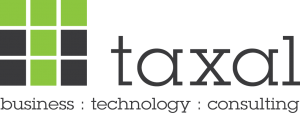I thought that I share with my readers a brief update on the highlights from last week’s Siemens PLM Software Analyst meeting. Unfortunately we’re (analysts) under non-disclosure on some facts and figures. In any case I’ll try to do my best to share what I can in terms of public highlights.
Albeit more than a little cautious on disclosure of numbers, Siemens were keen to position themselves as market leaders with revenue growths in a number of areas (cited by EVP Paul Vogel) well above those of their competitors. Year to date the Americas are up 12%, EMEA 23% and Asia Pacific (excluding Japan) 31%. Their direct sales teams productivity is up (past pre-2008 levels) and they appear to be winning a disproportionately large amount of deals versus their primary direct (Dassault Systèmes and PTC) competitors. As happened last year, they were keen to share their view on key wins and, more pointedly, competitor losses.
Growth across all major geographies (EMEA, APAC and North America) was supported by strong channel and partner leveraged revenues with channel (resellers) increasing their contribution substantially over the past few years. There’s very high growth in many of the BRICs (Brazil, Russia, India and China) regions with year to date growth rates in Brazil of 39%, Russia an impressive 98%, India 57% and China 34%. With regards some of their verticals segments, here to we’ve been made aware of disproportionate increases year to date over 2010; notably shipbuilding (a somewhat smaller segment) up 79.5% and industrial machinery (very large) 19% higher. Some of the larger deals in areas such as Automotive had yet to materially reflect on numbers but these will no doubt serve to further support growth results in the coming year.
To strategy; President Chuck Grindstaff presented an evolution in the focus of the organisation to one concentrated on Industry needs and importantly to the voice of their customers. This is not simply a new marketing message but encompasses elements of research and associated budget that should reflect a change from the product focus of old, to more focused solution mapping to their customers’ needs. With this change the company is transforming itself to lead with industries (segments) groups that will capture the needs of their customers, provide best practice and define vertical product strategies. These will supported by business segments that are involved with product focused strategy, marketing and development, and a geographically managed sales, marketing and service organisation. Underpinning these groups is the newly formed remit of the CTO, whose responsibility is to deliver consistency across the business, leveraging common technology platforms, use models and development environments.
In terms of technology Siemens is focussing on helping customers to make smarter decisions centred on three primary themes; intelligently integrated information, future proof architectures and the HD user experience. Interestingly, the first element of this messaging is well aligned with IBM who are themselves are focused on ‘Intelligent’ as a key underpinning to their Smarter Planet strategies. It will be interesting to note the development of this particular relationship, on one hand supported by IBM’s more independent view post IBM PLM divestiture, and on the other hand an increasing element of competition regarding Systems Engineering strategies and solutions.
Of course no overview is complete without note of their product offerings. Product streams encompassing (but not limited to)Teamcenter, NX, SolidEdge and the manufacturing solutions all are party to significant updates this year, some having recently had, and others due for significant update in the near future. Of particular note on product were Siemens’ comments (and some commitments) in the area of Systems Engineering, and their investment into their forthcoming decision support environment, Active Workspace.
As noted before, Systems engineering in particular was singled out as a highlighted area of focus in the near term by many including Chuck Grindstaff in his keynote. Although not a new area for Siemens, I have commented in the past on the increasing interest in a more holistic vision of engineering (and too in model based engineering), not least in some of their largest industry segments, automotive and aerospace. With a background of acquisitions by the likes of PTC (MKS), Dassault (Dynasim, Geensoft), and IBM (Telelogic) it comes as no surprise that when questioned on this topic, Siemens makes no secret of their interest to face the competition head on, not only with in-house developed solutions, but also with key partners and most interestingly, potential acquisition targets.
For more observations on this event please visit Siemens’ Blog page
